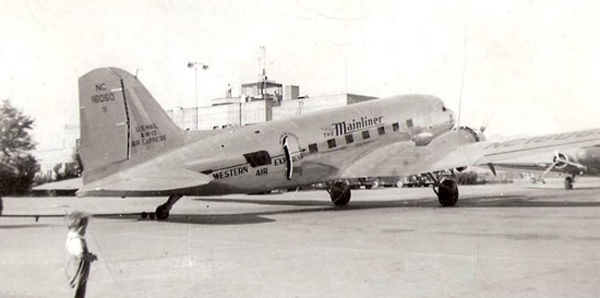Date & Time:
Dec 15, 1942 at 0122 LT
Type of aircraft:
Douglas DC-3
Registration:
NC16060
Flight Phase:
Flight
Flight Type:
Scheduled Revenue Flight
Survivors:
Yes
Site:
Plain, Valley
Schedule:
Salt Lake City – Las Vegas – Burbank
MSN:
1900
YOM:
1936
Flight number:
WA001
Country:
United States of America
Region:
North America
Crew on board:
4
Crew fatalities:
4
Pax on board:
15
Pax fatalities:
13
Other fatalities:
0
Total fatalities:
17
Captain / Total hours on type:
533
Copilot / Total hours on type:
126
Aircraft flight hours:
14773
Circumstances:
While cruising at the assigned altitude of 10,000 feet, the airplane entered an uncontrolled descent and crashed near Fairfield, Utah. Rescuers arrived on scene at 1125LT and two passengers seriously injured were evacuated while 17 other occupants were killed. It appears that the aircraft reached a wrong attitude and lost part of its wings and stabilizer prior to be out of control.
Crew:
Edward John Loeffler, pilot,
James Clifton Lee, copilot,
Douglas Mortimer Soule, copilot,
Cleo Lorraine Booth, stewardess.
Crew:
Edward John Loeffler, pilot,
James Clifton Lee, copilot,
Douglas Mortimer Soule, copilot,
Cleo Lorraine Booth, stewardess.
Probable cause:
On the basis of all of the facts, conditions and circumstances known to the Board at this time, it is concluded that failure of the left, or possibly both wing tips, and of the horizontal tail surfaces occurred in the air during a severe pull-up. However, no definite conclusion can be drawn from the evidence as to whether the pull-up was caused by operation of the controls by the crew, or by some other forces beyond their control. Due to the lack of any plausible theory for the latter, it seems more probable that the maneuver was initiated by the crew, possibly in an attempt to avoid collision with a bird, another aircraft, or some object which they saw or thought they saw.
Probable cause:
Failure of the left, or possibly both wing tips and of the horizontal tail surfaces as a result of a sever pull-up which caused unusual and abnormally high air loads. The reason the pull-up maneuver was not determined.
Probable cause:
Failure of the left, or possibly both wing tips and of the horizontal tail surfaces as a result of a sever pull-up which caused unusual and abnormally high air loads. The reason the pull-up maneuver was not determined.
Final Report:
NC16060.pdf1.51 MB


